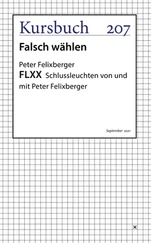The charge was detonated by remote control from a distance of several hundred yards. The explosions, which blasted clumps of dirt and mud a hundred feet into the air, also sent seismic waves radiating deep into the earth just like a miniature earthquake. Traveling tens of miles, these waves were recorded on seismographs placed near the blast site. The array of geophones picked up the sound waves.
They took turns, setting the explosive charges and detonating them. By three in the afternoon the sun was already low in the sky. The pilot was under strict orders from his base commander to be back in Memphis before nightfall. Too many people were shooting at aircraft in the dark. It had become a popular post-earthquake pastime. Several planes had been hit by automatic rifle fire in rural Tennessee and Kentucky.
Before they had to leave, there was time for one more test shot. It was Atkins and Elizabeth’s turn to place the charge. Jacobs helped.
As the helicopter crew watched from the safe distance, Elizabeth lowered the explosive charge gently into the hole they’d dug. She’d already wired the electric blasting cap to the condenser, which was attached to the stick of water-gel. By adjusting a dial, Atkins set the condensing device to receive the radio frequency that would detonate the explosives.
As they started back from the hole, Atkins saw Wren frantically waving at them. About a hundred yards away, he was shouting something and motioning with his hands, holding them palms down.
“Hit the dirt!” Jacobs yelled, instinctively realizing something had gone wrong.
Atkins threw himself into Elizabeth, pushing her down just as the ground erupted behind them. The concussion knocked them breathless. Clods of dirt and mud rained down on them.
Still gasping for air, Atkins staggered to his feet
Wren ran out to meet him. “It was an accident,” he shouted. “Are you all right?”
“What happened?” Atkins said. He was furious.
“Something must have gone wrong with the blasting machine,” Wren said. “The ready-to-fire light blinked on. That’s when I started shouting to you. Then the charge went off. It just happened.”
Just happened?
Atkins didn’t believe it for a minute. The blasting machine wouldn’t send out a radio signal unless the red “fire” switch was deliberately pressed. The machine required a precise series of steps to detonate a charge. First you had to press a green “charge” switch and hold it down until the meter showed the device was fully deflected to 1,000 volts. Then, while continuing to hold down the “charge” switch, you pressed the red “fire” switch. It was definitely a two-hand procedure, not easy to make a mistake.
Atkins shouted for Marshal, who hadn’t moved from his position by the blaster.
“Why did you push the firing switch?” Atkins yelled. “You could see we weren’t clear of the blast site.”
“I didn’t touch it,” Marshal said. “It was your job to set the frequency on the condenser. You must have screwed up.”
Marshal was almost a head taller than Atkins and heavier through the shoulders and chest. Moving straight at him, Atkins ducked under a right upper cut and hit him in the chest. He hit him twice in the face, but Marshal didn’t go down. He fought back, throwing hard punches that Atkins deflected.
Jacobs and the soldiers ran over and separated them.
“You stupid sonofabitch!” Atkins shouted. “You could have killed us.”
Marshal, bleeding from the nose, roughly pulled away from two soldiers who were trying to hold him.
“I’ll sue your ass for slander you keep that up. You were careless. That’s all.”
Atkins lunged for Marshal again and had to be held back.
When Atkins had calmed down, the pilot took him aside. “I don’t much like that bastard any more than you do. I don’t know what happened,” he said. “Or who’s to blame. And I don’t much care. We’ve got to get back to Memphis. I don’t want to be flying in the dark and get my ass shot out of the sky by some hillbilly who’s pissed because he lost his cabin in the earthquake.”
MEMPHIS
JANUARY 15
1:00 P.M.
BOOKER REACHED THE UNIVERSITY EARLY IN THE afternoon. He’d come with a companion, a small gray monkey that had started following him soon after he’d landed in Overton Park. Booker knew the Memphis Zoo was located there and figured the animal must have escaped from its cage during the earthquake. The monkey was shivering in the cold and Booker had given him one of the apples he’d brought with him. From that moment, the monkey stayed about ten feet behind Booker at all times and had trailed him to the university.
It took him a while to locate the earthquake center. The campus was a mess. The damage was worse than anything he’d seen at Oak Ridge, which was bad enough. The front of the new library had fallen off. Buildings were down wherever he looked, and even though it was cool, he smelled the sickly sweet odor of bodies that hadn’t been pulled from the wreckage and were starting to decay. If they didn’t take care of that soon, he knew they were going to have an epidemic on their hands.
When Booker finally found the earthquake center, he was told Walt Jacobs was in the field running tests and wouldn’t be back until later that evening. An armed guard also told him all the other seismologists were too busy to talk to him and denied him entrance to the building.
Booker showed the guard his ID from the Oak Ridge National Laboratory. “I jumped out of a goddamned airplane to get here,” he said angrily. “You’ve got to let me in there to talk to someone.”
The Army corporal shook his head. “Sorry, sir. I can’t do that.”
One of the seismologists stepped outside to smoke a cigarette. In an instant, the monkey shot from behind Booker and scurried through the open door. Feeling the annex’s warm air, it was trying to get out of the cold.
“Dammit,” the guard said, turning to give chase.
Booker entered the building right on the soldier’s heels. He was still wearing his bright-red jumpsuit and boots. He carried a small backpack. A pair of goggles were suspended from his neck. He made quite an impression.
As it ran about the library annex, the monkey kept up a frantic ear-splitting screech.
Steve Draper, the president’s science adviser, stepped into the hallway to see what was the matter. He’d stayed behind to monitor the situation after the president left.
“I want to talk to someone about the aftershocks,” Booker said, walking right up to him. He didn’t recognize Draper and assumed he was one of the seismologists. “Promise me, you’ll just hear me out.” He quickly explained who he was and why he was there.
“I’ve brought some notes,” he said, rushing along with his description. “I’m fairly sure the best depth would be at a minimum of two thousand feet. The deeper the better. I did a little research before I left. I’ve been playing with a graph that plots the magnitude of an earthquake with energy released in ergs. The energy released by a magnitude 5.5 quake has an energy equivalent of about 10 ergs to the twentieth power. A nuclear bomb, a small one, say 2 or 3 kilotons, would release about the same amount of energy. The trick here will be to release enough energy along the fault so you get a modest earthquake. But not enough to set off a big one. I can make that happen. The geologists need to tell me how big a bomb is required to do the job and where to place it. That should be pretty straightforward number crunching. I’d do it myself, but I’m getting a little rusty.”
Draper stared at him. He didn’t say a word.
MEMPHIS
JANUARY 15
11:05 P.M.
EVERYONE IN THE EARTHQUAKE CENTER WAITED nervously for Guy Thompson to begin. He and his small team of computer imagers had worked hours analyzing the seismic wave data generated by the many aftershocks as well as by the vibration and explosion tests Walt Jacobs’ team had carried out.
Читать дальше












